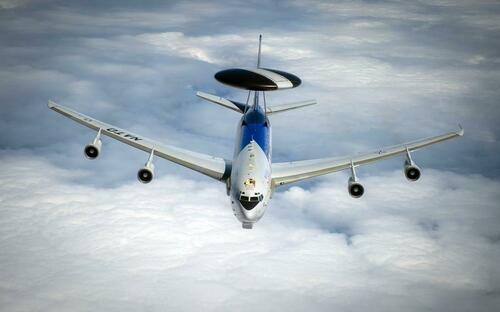
By John Vandiver of Stars and Stripes
Drones, reconnaissance planes and ships have been dispatched to the Baltic Sea, a move that comes in response to recently discovered damage to critical undersea infrastructure, NATO said this week.
“NATO will continue to adapt its maritime posture in the Baltic Sea and will take all necessary steps to keep allies safe,” NATO spokesman Dylan White said Thursday in a statement.

The vulnerability of undersea gas pipelines and communication cables to sabotage is a growing NATO concern. Alliance officials have warned that Russia could target such infrastructure to gain leverage against allied countries providing security assistance to Ukraine.
On Tuesday, those concerns were brought into focus when Sweden reported partial damage to an undersea telecommunications cable connected to Estonia. Authorities suspect the damage occurred at the same time an undersea gas pipeline and telecommunications cable running from Finland to Estonia was found to be damaged last week.
The incidents remain under investigation and senior NATO officials have refrained from blaming Russia so far.
“If it is proven to be a deliberate attack on NATO-critical infrastructure, then this will be, of course, serious, but it will also be met by a united and determined response,” NATO Secretary-General Jens Stoltenberg said last week during a meeting of allied defense ministers.
NATO said it will more closely monitor an area that already had been under surveillance since the 2022 sabotage of Nord Stream 1, a Baltic Sea pipeline that delivered natural gas from Russia to Germany.
Maritime patrol aircraft, NATO AWACS planes, drones and a fleet of four minehunter vessels are part of the enhanced surveillance effort.
“We continue to monitor the situation closely, and we remain in close contact with our allies Estonia and Finland, and our partner Sweden,” White said.
By John Vandiver of Stars and Stripes
Drones, reconnaissance planes and ships have been dispatched to the Baltic Sea, a move that comes in response to recently discovered damage to critical undersea infrastructure, NATO said this week.
“NATO will continue to adapt its maritime posture in the Baltic Sea and will take all necessary steps to keep allies safe,” NATO spokesman Dylan White said Thursday in a statement.

The vulnerability of undersea gas pipelines and communication cables to sabotage is a growing NATO concern. Alliance officials have warned that Russia could target such infrastructure to gain leverage against allied countries providing security assistance to Ukraine.
On Tuesday, those concerns were brought into focus when Sweden reported partial damage to an undersea telecommunications cable connected to Estonia. Authorities suspect the damage occurred at the same time an undersea gas pipeline and telecommunications cable running from Finland to Estonia was found to be damaged last week.
The incidents remain under investigation and senior NATO officials have refrained from blaming Russia so far.
“If it is proven to be a deliberate attack on NATO-critical infrastructure, then this will be, of course, serious, but it will also be met by a united and determined response,” NATO Secretary-General Jens Stoltenberg said last week during a meeting of allied defense ministers.
NATO said it will more closely monitor an area that already had been under surveillance since the 2022 sabotage of Nord Stream 1, a Baltic Sea pipeline that delivered natural gas from Russia to Germany.
Maritime patrol aircraft, NATO AWACS planes, drones and a fleet of four minehunter vessels are part of the enhanced surveillance effort.
“We continue to monitor the situation closely, and we remain in close contact with our allies Estonia and Finland, and our partner Sweden,” White said.
Loading…






